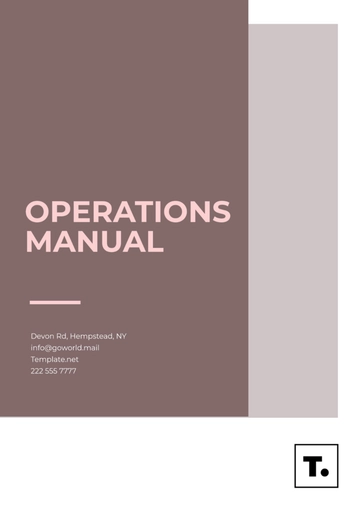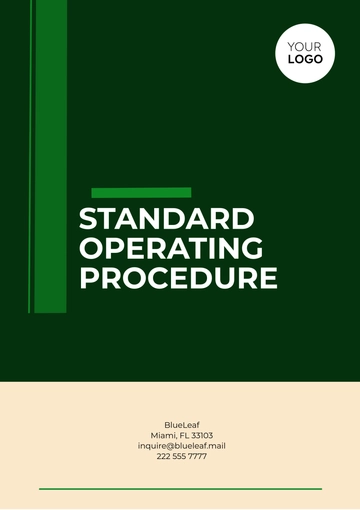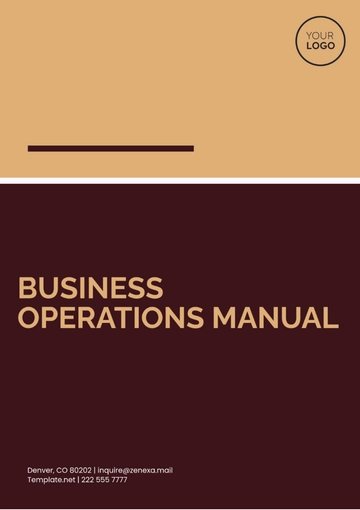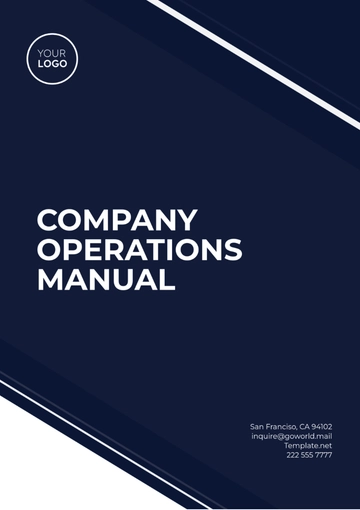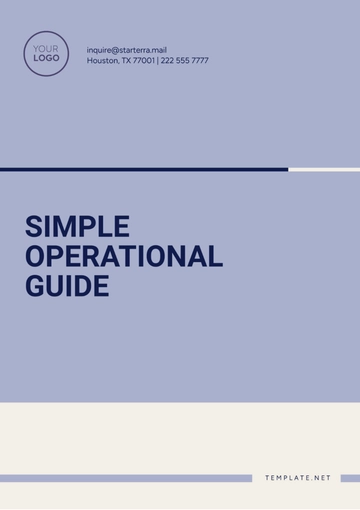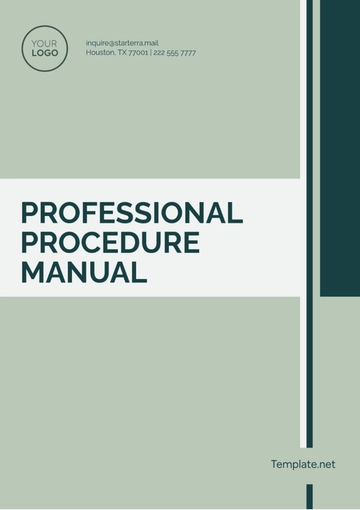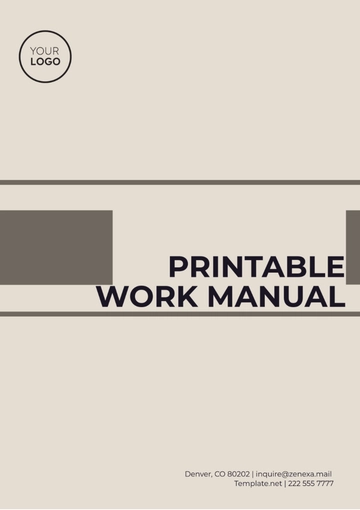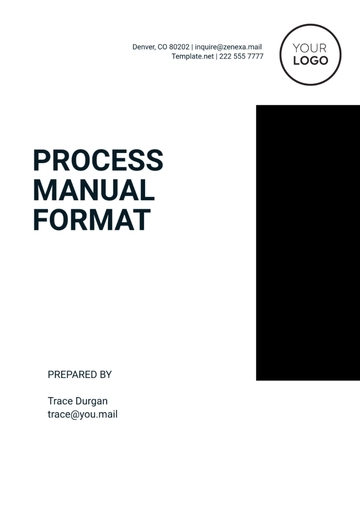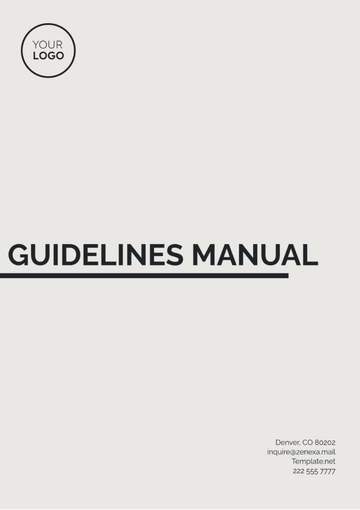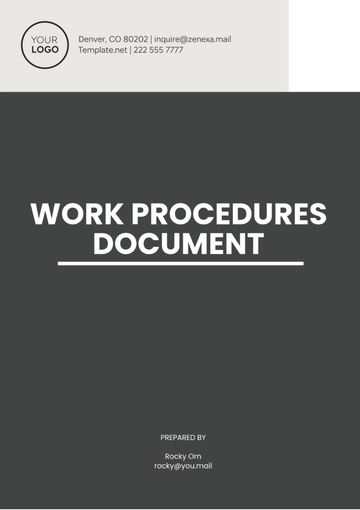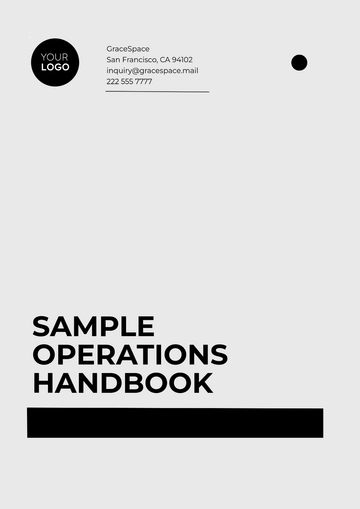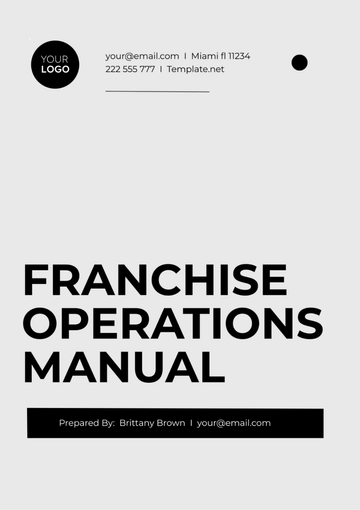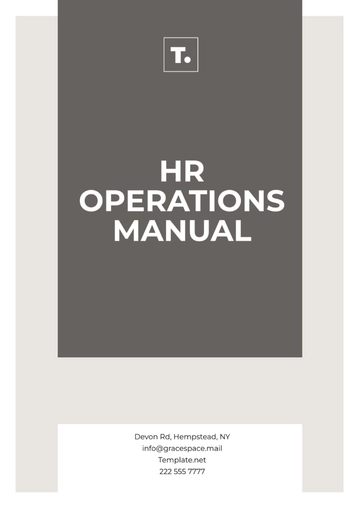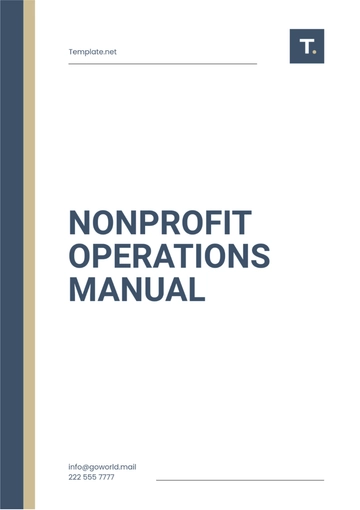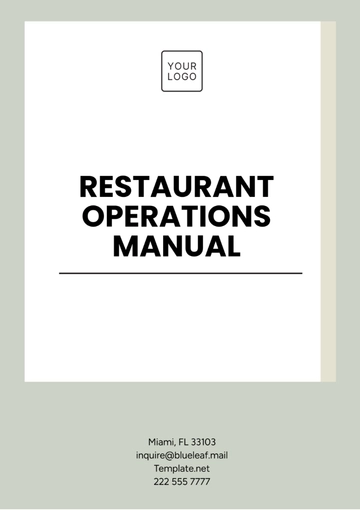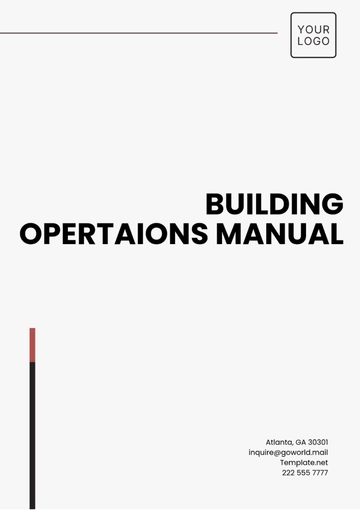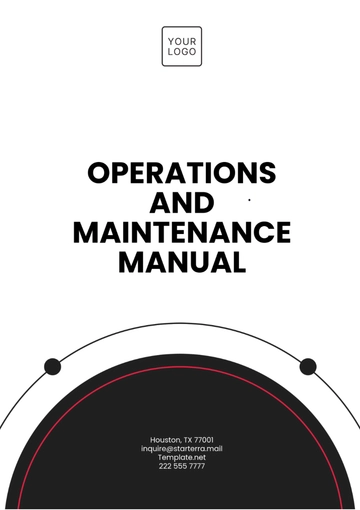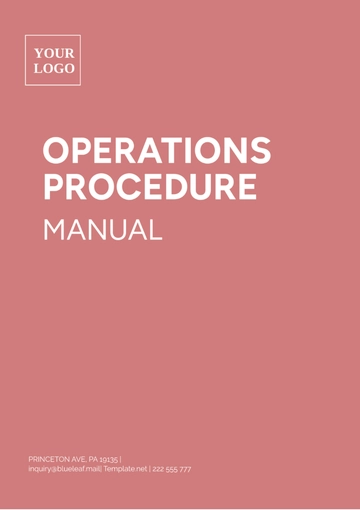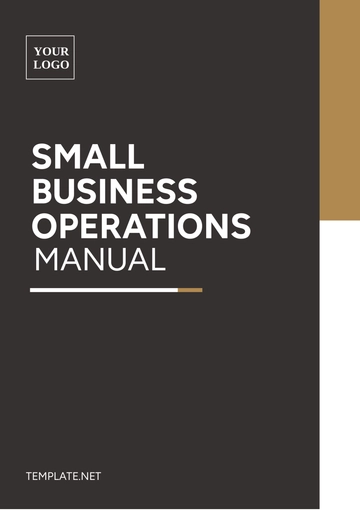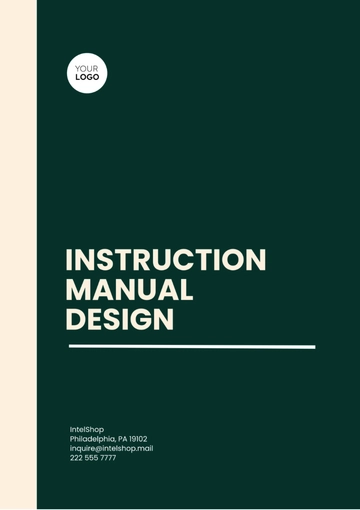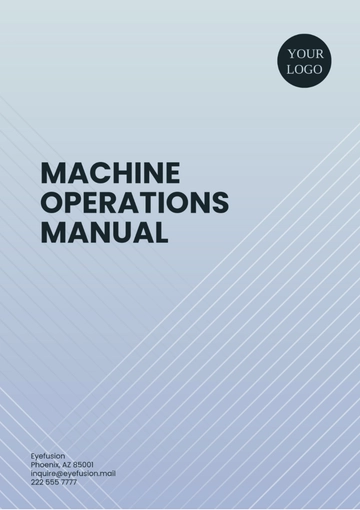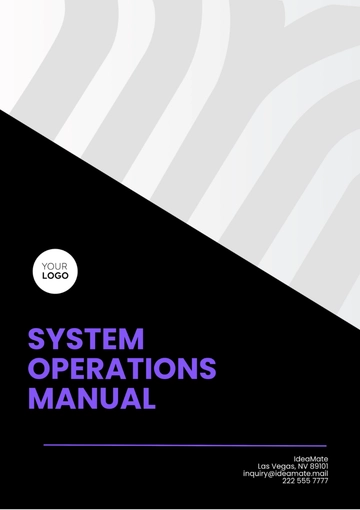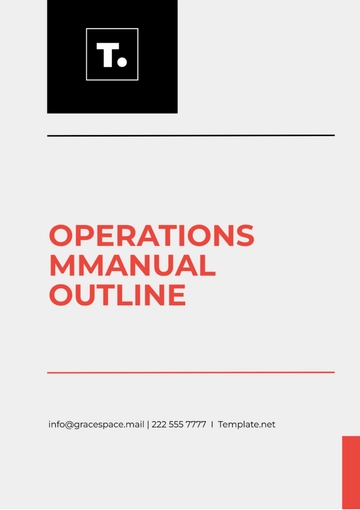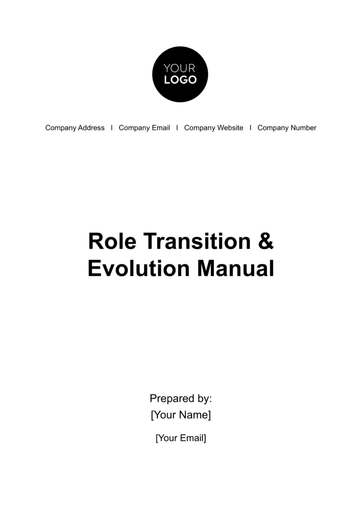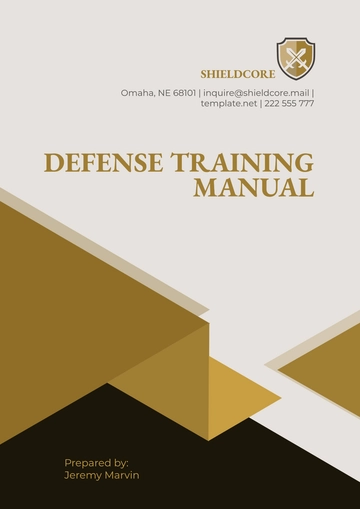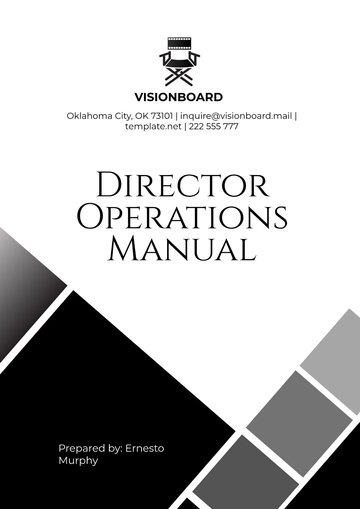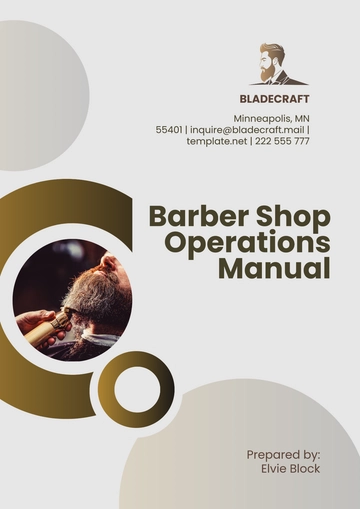Free Bakery Quality Assurance Manual
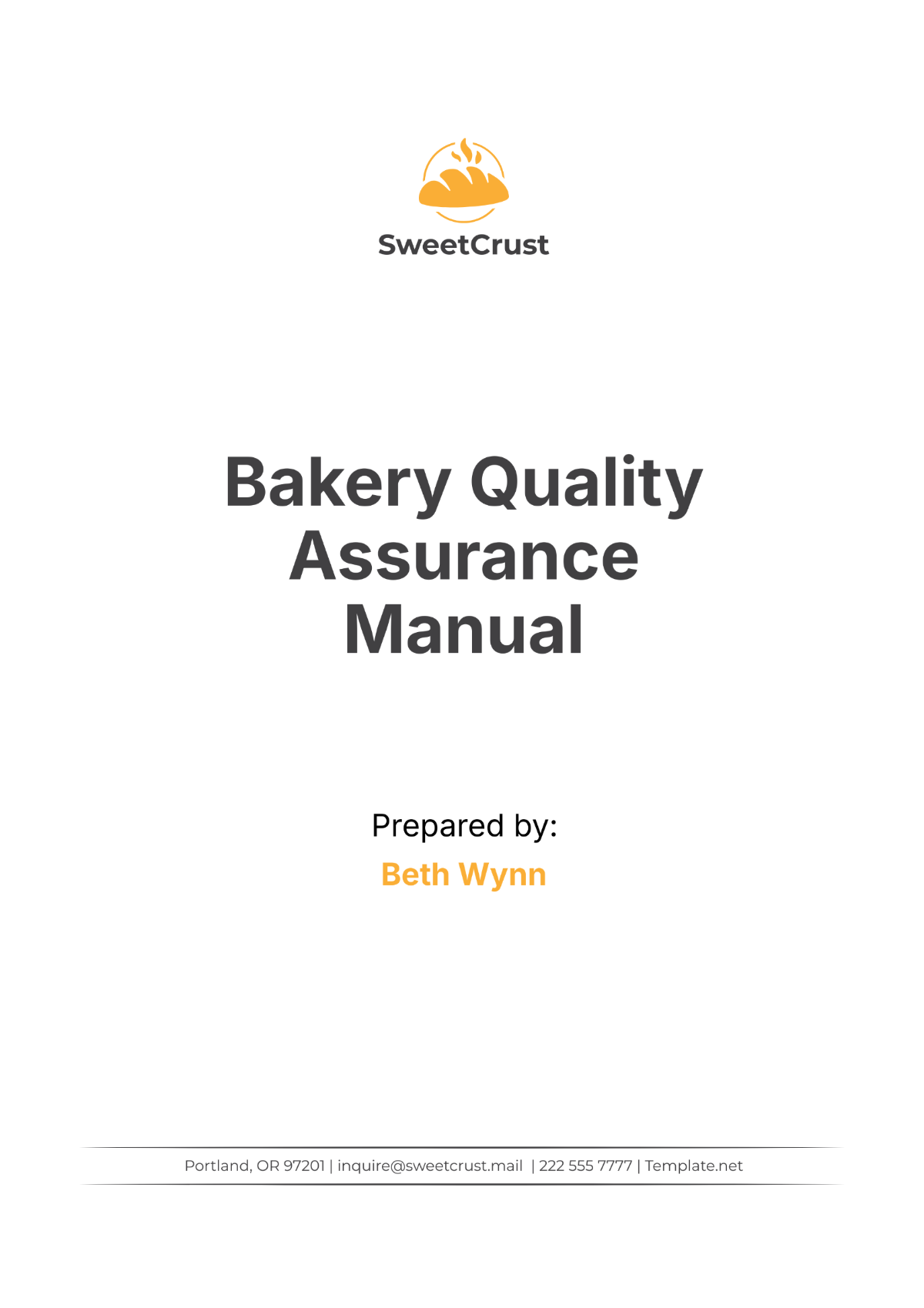
I. Introduction
Welcome to the Quality Assurance Manual for [Your Company Name]. At [Your Company Name], we are dedicated to maintaining the highest standards of quality in every product we produce. This manual outlines the procedures and standards that ensure our baked goods meet both regulatory requirements and our own rigorous quality benchmarks. By adhering to these guidelines, we aim to deliver exceptional products that consistently satisfy our customers' expectations and uphold our reputation for excellence.
Our Quality Assurance (QA) program is designed to address every aspect of the production process, from ingredient sourcing to final product inspection. This manual provides detailed instructions on quality control practices, safety protocols, and compliance measures to ensure that every item leaving our bakery is of the highest quality. We believe that a robust QA system is crucial to our success and to the trust our customers place in us. By following this manual, our team members contribute to maintaining our commitment to quality and ensuring that our products are safe, delicious, and made to perfection.
II. Quality Control Objectives
At [Your Company Name], our quality control process is foundational to maintaining the high standards we are known for. We are committed to delivering products that not only meet but exceed our customers' expectations while ensuring the highest levels of safety and compliance.
The primary objectives of our quality control process are:
Ensure the safety and quality of all bakery products.
Meet and exceed customer expectations.
Comply with local, state, and federal regulations.
III. Ingredients and Sourcing
To uphold the highest standards of quality and safety, [Your Company Name] ensures that all ingredients used in our bakery products are sourced from reliable and approved suppliers. Our rigorous ingredient sourcing process is crucial in maintaining the consistency and excellence that our customers expect. We regularly review and update our list of approved suppliers to reflect the best sources for our ingredients, as outlined in the following table.
A. Approved Suppliers
All ingredients must be sourced from approved suppliers to ensure consistency in quality and safety. A list of approved suppliers is maintained and regularly reviewed.
Supplier Name | Ingredient | Contact Information |
|---|---|---|
ABC Supplies | Flour | 555-1234 |
EFG Supplies | Fruits | 555-5678 |
B. Ingredient Specifications
Each ingredient must meet specific quality criteria, including:
Freshness and shelf life
No presence of contaminants
Compliance with food safety standards
IV. Production Process
The production process at [Your Company Name] is meticulously designed to ensure that every bakery product meets our high standards of quality and consistency. From the initial mixing to the final cooling phase, each step is carefully controlled and monitored according to our standard operating procedures (SOPs). This rigorous approach helps maintain the integrity and excellence of our products, reflecting our commitment to delivering only the best to our customers.
Mixing and Baking |
|---|
All mixing and baking procedures must be followed as per the standard operating procedures (SOPs). Here is a brief overview of the steps:
|
Cooling |
|---|
Post-baking, products should be cooled on wire racks to prevent condensation and maintain quality. Proper cooling is essential to ensure that the texture and flavor of the baked goods are preserved. |
Quality Checks |
|---|
Conduct the following quality checks at each stage:
|
By adhering to these processes, [Your Company Name] ensures that every product is crafted to perfection, meeting both safety and quality expectations.
V. Packaging and Storage
Effective packaging and storage are crucial for maintaining the quality and safety of our bakery products. At [Your Company Name], we are committed to using high-quality, food-grade materials that not only protect our products but also align with our environmental sustainability goals. Proper storage conditions are essential to preserving the freshness and extending the shelf life of our products. This section outlines our packaging and storage protocols to ensure that every item reaches our customers in optimal condition.
A. Packaging Materials
All bakery products at [Your Company Name] must be packaged using food-grade, environmentally-friendly materials. Packaging should be intact and free from any damage or contamination to prevent spoilage and maintain product integrity. We prioritize materials that meet regulatory standards and support our commitment to sustainability. Proper packaging also helps in maintaining product freshness and prevents cross-contamination, ensuring that each item delivered to our customers is of the highest quality.
B. Storage Conditions
Finished products should be stored in a clean, dry area with the following conditions:
Temperature: | Maintain storage temperature between 15-25°C (59-77°F) to prevent spoilage and ensure product quality. |
Humidity: | Keep humidity levels below 50% to avoid moisture-related issues such as mold growth or texture changes. |
These storage conditions help preserve the quality and safety of our bakery products, ensuring that they remain fresh and appealing.
C. Inventory Management
To efficiently manage our inventory and ensure product freshness, we employ a First-In, First-Out (FIFO) system. This method ensures that older stock is used before newer stock, reducing waste and maintaining optimal product quality. Regular inventory checks are conducted to monitor stock levels and ensure compliance with FIFO practices. This approach not only supports effective inventory management but also aligns with our commitment to minimizing waste and promoting sustainability.
V. Distribution and Delivery
The distribution and delivery of our bakery products are critical to ensuring that they reach our customers in perfect condition. At [Your Company Name], we are dedicated to maintaining the highest standards throughout the distribution process, from loading procedures to delivery conditions. Our protocols are designed to protect product quality, adhere to safety standards, and meet customer expectations.
A. Loading Procedures
When loading delivery vehicles, it is essential to adhere to the following procedures to ensure that products are transported safely:
Cleanliness of the Vehicle: Ensure that all delivery vehicles are thoroughly cleaned and sanitized before use. This prevents cross-contamination and maintains hygiene standards.
Secure Packaging: Verify that all packaging is properly secured to prevent damage during transit. Use appropriate restraints and padding to keep items in place and protect them from shifting or impacts that could compromise their quality.
Proper loading procedures help in safeguarding the integrity of our bakery products and reducing the risk of spoilage or damage during transportation.
B. Delivery Conditions
During delivery, maintaining proper temperature controls is vital to preserving product quality:
Temperature Controls: Monitor and control the temperature inside the delivery vehicle to ensure it remains within the specified range for the products being transported. This helps prevent temperature fluctuations that could affect the freshness and safety of the bakery items.
Regular Inspections: Conduct regular inspections of the delivery vehicle's temperature and condition during transit. Immediate action should be taken if any deviations from the required conditions are detected.
VI. Employee Training
At [Your Company Name], we recognize that well-trained employees are key to maintaining our high standards of quality and safety. Comprehensive training ensures that every team member is equipped with the knowledge and skills necessary to perform their duties effectively and uphold our commitment to excellence. This section details the essential training programs and continuous education practices that support our quality assurance efforts and regulatory compliance.
A. Training Programs
All employees must undergo a comprehensive training program covering:
Food Safety and Hygiene Standards: Training includes best practices for maintaining cleanliness, preventing cross-contamination, and handling food safely to meet industry and regulatory standards.
Quality Control Procedures: Employees are educated on our quality control protocols, including proper handling, inspection procedures, and maintaining consistency in product quality.
Emergency and Incident Response Protocols: Training involves preparedness for potential emergencies and incidents, including health and safety protocols, response actions, and reporting procedures to ensure swift and effective resolution.
These training programs ensure that every employee understands their role in maintaining product quality and safety, and is prepared to handle any situations that may arise.
B. Continuous Education
To keep employees informed about evolving industry practices and regulatory changes, regular workshops and refresher courses are essential:
Workshops: Conduct periodic workshops to introduce new practices, technologies, or regulatory updates relevant to our operations. These workshops foster a culture of continuous improvement and innovation.
Refresher Courses: Offer ongoing refresher courses to reinforce existing knowledge and address any updates or changes in standards. This ensures that all employees remain current with best practices and compliance requirements.
VII. Monitoring and Evaluation
To uphold the high standards of quality at [Your Company Name], continuous monitoring and evaluation are essential. This section outlines our approach to maintaining excellence through regular inspections and customer feedback. By implementing thorough monitoring practices and valuing customer insights, we ensure that our bakery products consistently meet our quality assurance standards and address any areas needing improvement.
A. Regular Inspections
Conducting regular internal audits and inspections is a critical component of our quality control process. These inspections assess compliance with established quality assurance protocols and identify any deviations or areas requiring corrective action. Internal audits cover all aspects of our operations, from ingredient sourcing and production processes to packaging and storage. These inspections help maintain consistent quality and identify potential issues before they affect product quality.
B. Customer Feedback
Systematically gathering customer feedback is vital for continuous improvement. We actively solicit input from customers regarding their experiences with our products, focusing on aspects such as taste, freshness, and overall satisfaction. Analyzing this feedback allows us to identify trends and areas for enhancement, ensuring that we address any concerns and adapt our practices to better meet customer expectations. By incorporating feedback into our quality assurance processes, we continuously refine our products and services.
VIII. Documentation
Effective documentation is crucial for maintaining transparency and accountability in our quality control processes at [Your Company Name]. Proper record-keeping ensures that all quality assurance activities are accurately tracked and readily accessible, supporting both internal reviews and external regulatory compliance. This section details our approach to record-keeping and compliance documentation to uphold our standards of quality and regulatory adherence.
A. Record Keeping
Maintain accurate and up-to-date records of all quality control activities, including:
Ingredient Receiving Logs: Document the receipt of ingredients, including details on supplier, quantity, and inspection results.
Batch Production Records: Track the details of each production batch, including ingredient quantities, production conditions, and any deviations from standard procedures.
Inspection and Audit Reports: Record findings from regular inspections and audits, noting any issues identified and actions taken.
B. Compliance Documentation
Ensure all required compliance documentation is maintained and accessible for regulatory review. This includes certifications, permits, and any other documentation required by local, state, and federal regulations. Properly organized documentation supports regulatory inspections and audits, demonstrating our commitment to maintaining high standards and compliance with all applicable laws.
Thank you for reviewing the Bakery Quality Assurance Manual for [Your Company Name]. By adhering to the protocols outlined in this manual, we ensure that our products meet the highest standards of quality, safety, and customer satisfaction. Our commitment to rigorous quality control, thorough documentation, and continuous improvement reflects our dedication to excellence in every aspect of our operations. We trust that this manual will guide our team in upholding these standards and delivering exceptional bakery products. Your adherence to these guidelines is crucial to our ongoing success and reputation.
- 100% Customizable, free editor
- Access 1 Million+ Templates, photo’s & graphics
- Download or share as a template
- Click and replace photos, graphics, text, backgrounds
- Resize, crop, AI write & more
- Access advanced editor
Ensure top-notch quality with the Bakery Quality Assurance Manual Template from Template.net. Fully customizable and editable, this template provides detailed procedures for maintaining and improving product quality. Editable in our AI Editor Tool, it ensures your manual is professional, precise, and tailored to your bakery’s quality standards.
